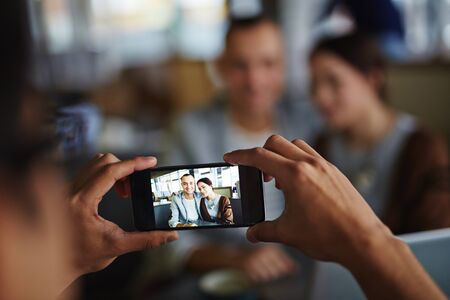1. Understanding the American Consumers Mobile Behavior
How Americans Use Their Phones for Local Shopping
In todays fast-paced world, smartphones are always within arms reach for most Americans. When it comes to shopping, especially with brick-and-mortar businesses, mobile devices play a huge role in how people discover and interact with local stores. Lets break down some key trends and stats that show just how important mobile marketing is in the U.S.
Key Mobile Usage Statistics
| Behavior | Percentage of U.S. Shoppers |
|---|---|
| Use mobile devices to find store locations or hours | 77% |
| Search for deals or coupons on their phones while in-store | 65% |
| Read reviews about local businesses before visiting | 82% |
| Compare prices using their phone inside a physical store | 58% |
| Look up product information while shopping in-store | 70% |
Mobile Moments That Matter
The way Americans shop has shifted. Instead of planning every purchase ahead of time, many shoppers make decisions on the go—right from their phones. For example, someone might search “best coffee near me” while theyre out running errands, or check if a clothing store has an item in stock before making a trip.
The Power of “Near Me” Searches
“Near me” searches have exploded in popularity in recent years. More than ever, people want quick results that help them solve their needs immediately—whether its finding the nearest pizza place, pharmacy, or hardware store. Businesses that optimize for these mobile searches can attract customers right when theyre ready to buy.
Why Mobile Experience Matters for Brick-and-Mortar Stores
If your business has a physical location, your online presence—especially on mobile—is often the first impression you make. A slow-loading website or missing information can send shoppers to your competitors instead. Americans expect fast answers and easy access to directions, reviews, and special offers directly from their smartphones.
2. Integrating Mobile and In-Store Experiences
Bridging Digital and Physical Shopping
In the American market, shoppers expect seamless experiences whether they’re browsing online or walking through a brick-and-mortar store. By integrating mobile technology with in-store strategies, retailers can create a shopping journey that feels both convenient and personal. Here’s how you can bring these worlds together:
Mobile Touchpoints to Enhance In-Store Engagement
| Mobile Tool | How It Works In-Store | Benefits for Shoppers |
|---|---|---|
| Store Apps | Customers use apps for digital coupons, loyalty rewards, or in-app navigation while shopping. | Saves money, speeds up shopping, offers personalized deals. |
| Mobile-Friendly Websites | Shoppers quickly check inventory, product details, or reviews on their phones while in the store. | Makes decision-making easier and faster; improves confidence in purchases. |
| QR Codes | Placed on shelves or products for instant access to promotions, videos, or detailed info. | Adds interactive fun; keeps customers engaged and informed. |
| Push Notifications | Sends real-time alerts about flash sales or restocked items as soon as shoppers enter the store. | Keeps customers up-to-date; increases excitement and urgency to buy. |
Practical Examples of Integration
- Loyalty Check-Ins: Encourage shoppers to “check in” via your app when they arrive. Offer extra points or small rewards for visiting in person.
- Scan & Learn: Use QR codes next to products so customers can scan with their phones to watch demos or read customer reviews instantly.
- Mobile Pay: Allow shoppers to pay using their phone, skipping the traditional checkout line and making the process more convenient.
- Personalized Offers: Use location data from your app to send special discounts just as customers walk by relevant aisles or displays.
The Key: Harmony Between Online and Offline
The goal is to make sure that mobile tools don’t replace the in-store experience—they enhance it. When done right, this integration makes shopping more enjoyable, efficient, and memorable for your American customers.

3. Personalized Mobile Marketing Tactics That Work
Push Notifications: Timely, Relevant, and Engaging
Push notifications are a powerful way for brick-and-mortar businesses in the U.S. to connect with customers instantly. When used wisely, they can remind shoppers about sales, special events, or even just welcome them back to your store. The key is to keep messages short, timely, and relevant. Overusing push notifications can annoy users, so focus on quality over quantity.
Best Practices for Push Notifications
| Do | Dont |
|---|---|
| Send limited-time offers during business hours | Spam users with daily alerts |
| Personalize messages with customer names or preferences | Send generic mass messages |
| Provide value (discounts, exclusive info) | Interrupt users late at night or early morning |
Location-Based Offers: Reaching Shoppers at the Right Place and Time
Location-based marketing uses GPS or Wi-Fi data to deliver offers when a customer is near or inside your store. This tactic works well in the U.S., where consumers appreciate convenience and instant rewards. For example, sending a 10% off coupon when someone enters your shopping mall can encourage immediate visits to your shop.
Popular Location-Based Campaign Ideas:
- Welcome messages: Greet customers as they arrive at your store.
- In-store promotions: Offer discounts only available while theyre inside.
- Event invitations: Notify nearby users about special events or flash sales happening soon.
Mobile Loyalty Programs: Building Customer Relationships
Loyalty programs have gone digital, making it easier than ever for American shoppers to earn and redeem rewards from their smartphones. Mobile loyalty apps can track points, offer personalized deals based on shopping habits, and send reminders about unused rewards. This keeps your brand top-of-mind and encourages repeat visits.
Main Features of Successful Mobile Loyalty Programs:
| Feature | Description | Benefit for Customers |
|---|---|---|
| Easy Sign-Up | Simplified registration process via app or SMS | No hassle to join and start earning rewards quickly |
| Personalized Rewards | Treats based on past purchases or preferences | Makes customers feel valued and understood |
| Exclusive Offers & Events | Access to members-only deals and store events | Makes loyalty program feel special and worthwhile |
| Push Notification Reminders | Sends updates on points, expiring rewards, or new perks | Keeps the brand top-of-mind without being intrusive |
The American Consumer Mindset: What Matters Most?
U.S. shoppers value convenience, personalization, and rewards that feel genuine. By using mobile marketing tactics like push notifications, location-based offers, and loyalty programs tailored to their needs, brick-and-mortar stores can boost foot traffic and build lasting relationships. Remember: always respect privacy and only use data to enhance—not invade—the customer experience.
4. Leveraging Social Media and Local Platforms
The Power of Social Media for Local Businesses
Social media has become a game-changer for brick-and-mortar stores in the U.S. Platforms like Facebook, Instagram, and TikTok offer unique ways to connect with local customers. By sharing store updates, promotions, and behind-the-scenes content, businesses can create a loyal community that feels more like neighbors than just shoppers.
How Social Media Drives Foot Traffic
When customers see exciting posts about special events or limited-time offers, they’re more likely to visit your physical location. Features like geotagging and local hashtags also help your posts reach people nearby. Responding quickly to comments or messages builds trust and encourages visits.
Examples of Effective Social Media Strategies
| Strategy | How It Helps | Popular Platforms |
|---|---|---|
| Live Videos (e.g., product demos) | Showcase new arrivals; real-time Q&A boosts engagement | Facebook Live, Instagram Live |
| User-Generated Content (sharing customer photos) | Makes customers feel valued; inspires others to visit | Instagram, Facebook |
| Local Hashtags (#ShopLocal) | Attracts people searching for things to do nearby | Instagram, Twitter |
| Stories with Polls or Questions | Gathers customer opinions; increases interaction | Instagram Stories, Facebook Stories |
The Role of Location-Based Platforms: Google Maps & Yelp
Location-based platforms are essential tools for American brick-and-mortar businesses. Google Maps and Yelp help customers find you easily and learn about your business before they even walk in the door. A strong presence on these apps can mean the difference between being busy or being overlooked.
Key Benefits of Google Maps and Yelp for Storefronts
- Increased Visibility: Appearing in local searches puts your business right in front of potential visitors.
- Customer Reviews: Positive reviews build credibility and attract new customers who value word-of-mouth recommendations.
- Business Information: Up-to-date hours, contact info, and photos make it easier for customers to plan their visit.
- Special Offers: Posting deals or events on these platforms draws attention and drives foot traffic during slow periods.
Quick Comparison: Social Media vs. Location-Based Platforms
| Social Media | Google Maps & Yelp | |
|---|---|---|
| Main Purpose | Create relationships, share updates and promotions | Help customers find you and read reviews |
| User Action | Liking, commenting, sharing content; following business pages | Searching for businesses; leaving/reading reviews; getting directions |
| Main Benefit for Stores | Loyalty, community building, brand awareness | Immediate discovery, increased foot traffic |
| Cultural Importance in U.S. | Younger audiences prefer social media for trends and recommendations | Most consumers check reviews before visiting a new place |
Tapping into Both Worlds for Maximum Impact
The most successful American brick-and-mortar businesses use both social media and location-based platforms together. For example, encouraging happy customers to leave a review on Google after posting a photo from your shop on Instagram creates a cycle of trust, excitement, and steady foot traffic.
5. Measuring ROI and Success Metrics in the U.S. Market
Why Measurement Matters for Mobile Marketing
To truly succeed with mobile marketing in the American brick-and-mortar landscape, you need to know what’s working and what’s not. Tracking your return on investment (ROI) and key metrics helps you spend smarter, reach more customers, and boost in-store sales. Let’s break down how you can measure success and use data to drive better results.
Key Metrics to Track Mobile-Driven Campaigns
| Metric | What It Measures | Why It Matters |
|---|---|---|
| Click-Through Rate (CTR) | The percentage of users who click your mobile ad or message | Shows engagement level with your campaign content |
| Foot Traffic Lift | The increase in store visits during/after a campaign | Directly links mobile efforts to physical store performance |
| Redemption Rate | The percentage of mobile coupons or offers used in-store | Measures effectiveness of promotions in driving purchases |
| Cost Per Acquisition (CPA) | The cost to acquire each new customer via mobile marketing | Helps evaluate if campaigns are profitable |
| Customer Lifetime Value (CLV) | The total value a customer brings over time from mobile campaigns | Assesses long-term impact, not just one-time sales |
| App Downloads & Engagement | The number of times your app is downloaded and used | Indicates ongoing interest and loyalty from mobile users |
| User Demographics & Behavior | Ages, locations, and preferences of users engaging with your campaigns | Helps tailor future messaging for better results |
Top Analytics Tools for U.S. Businesses
- Google Analytics: Tracks website clicks, conversions, and integrates with Google Ads for in-depth insights.
- Facebook Ads Manager: Measures performance of social media campaigns targeting local audiences.
- Foursquare Attribution: Connects digital ads to real-world store visits using location data.
- Punchh or Thanx: Loyalty platforms that track customer engagement from mobile offers to in-store actions.
- Clover or Square POS: Point-of-sale systems that link mobile promotions directly to sales data.
- Moz Local or Yext: Monitor online reviews and local search visibility driven by mobile efforts.
Interpreting Data for Better Results
Diving into the numbers is only half the job—knowing how to act on them is key. If your CTR is high but foot traffic is low, your ad might be eye-catching but not motivating enough to get people in the door. If you see strong redemption rates on certain days or products, double down on those offers. Segment your data by time of day, location, or audience type to spot trends unique to your U.S. market area. Regularly test new messages, creative assets, and channels, then compare results side-by-side to see what delivers the best ROI.
Simple Steps to Optimize Your Campaigns:
- Set clear goals before launching any campaign—do you want more store visits, higher sales, or repeat customers?
- Check your metrics weekly or monthly and look for patterns.
- Tweak your offers or messaging based on what resonates most with American shoppers.
- A/B test different approaches and keep improving with every round.
If you focus on these simple but powerful steps, you’ll make sure every dollar spent on mobile marketing brings measurable value to your brick-and-mortar business in the U.S. market.


